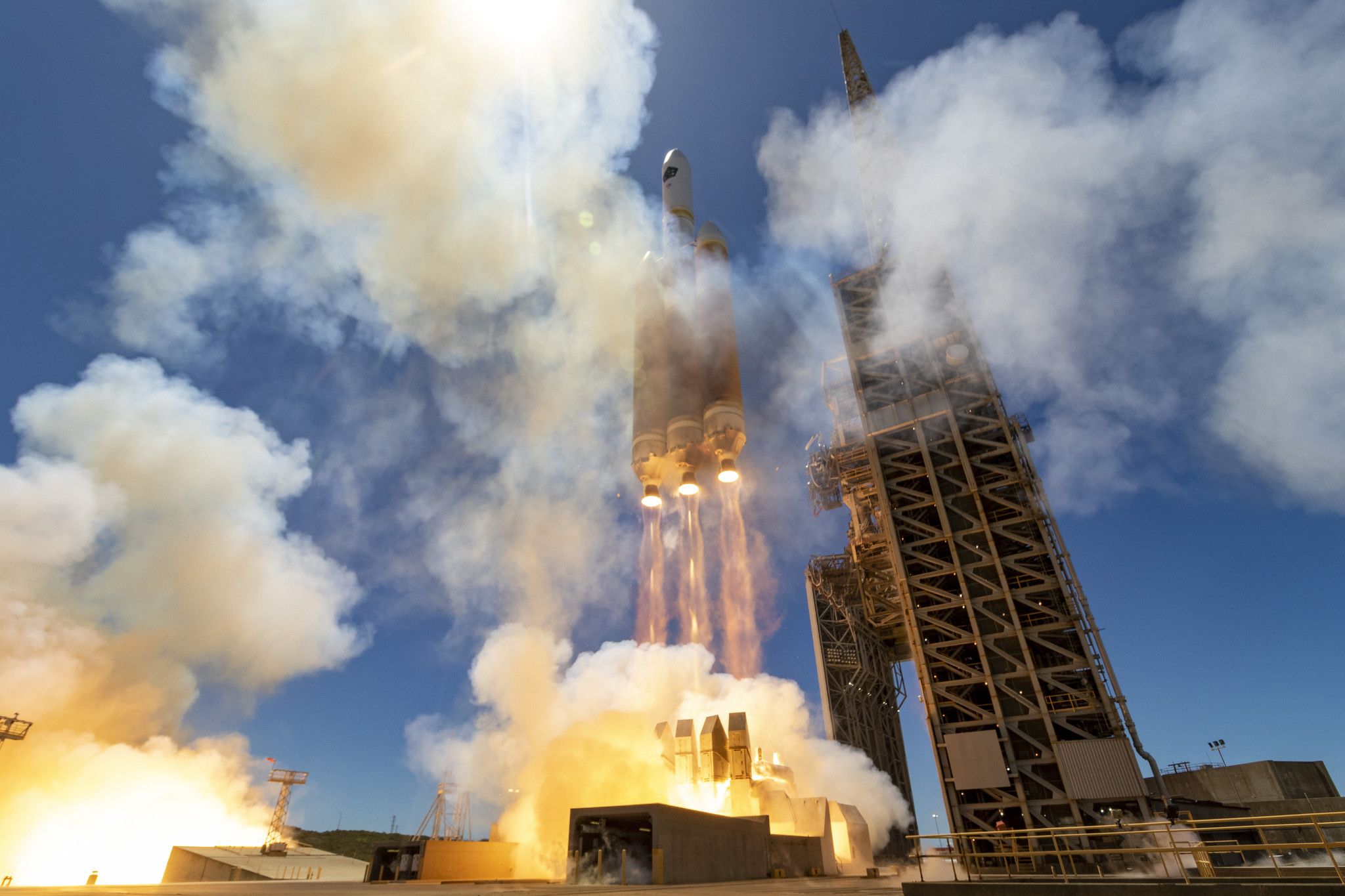Huge Delta IV Heavy rocket launches US spy satellite to orbit
A new U.S. spy satellite launched into space Monday afternoon (April 26) on the mightiest rocket built by the United Launch Alliance (ULA): the massive Delta IV Heavy.
The behemoth blasted off at 4:47 p.m. EST (2047 GMT) from Space Launch Complex 6 at Vandenberg Air Force Base in California, carrying the classified NROL-82 satellite into orbit for the National Reconnaissance Office (NRO).
Delta IV engineer Rob Kesselman "confirmed the successful completion of the early phase of today's flight and all systems continue to operate nominally," launch commentator Caroline Kirk said during a webcast of the launch.
Video: Delta IV Heavy rocket launches spy satellite from California
Related: Spy satellite NROL-71 soars on secret mission atop Delta IV Heavy

ULA, a 50-50 joint venture between Lockheed Martin and Boeing, has only four remaining Delta IV Heavy rockets in its fleet. All of those are assigned to launch missions for the NRO, with two launches from California (including today's mission) and the remaining two to launch from Florida.
The Delta IV Heavy is currently the most powerful rocket in ULA's fleet. Fueled by 465,000 gallons (1.76 million liters) of superchilled liquid hydrogen and liquid oxygen, the mega launcher consists of three common core boosters that generate more than 2 million pounds of thrust.
The Delta family of rockets also included two single-stick versions: the Delta II and the Delta IV Medium. (ULA previously retired the Delta II rocket in 2018 and its Delta IV Medium in 2019.)
Get the world’s most fascinating discoveries delivered straight to your inbox.

Monday's liftoff marked the 13th flight of a Delta IV Heavy rocket since its debut in 2004 and features one of only four Delta IV rockets remaining. ULA plans to retire the launcher before rolling out its next-generation vehicle, the Vulcan Centaur. That launcher is estimated to debut later this year.
Shortly before the launch countdown began, the 330-foot-tall (100 meters) shroud encasing the rocket — called the Mobile Service Tower, or MST — rolled away, exposing the colossal vehicle, which stands 233 feet (71 m) tall and measures approximately 53 feet (16 m) wide.
Of the previous 12 Delta IV Heavy missions, eight carried NRO payloads. Some of the vehicle's other notable missions launched NASA's Orion capsule on an uncrewed test flight to Earth orbit in 2014 and the agency's Parker Solar Probe in 2018 on a mission to study the sun.
Preparations for this launch began in February as ULA raised the rocket on the pad at SLC-6. Since then, the team has completed a wet dress rehearsal, where they load the rocket with fuel and simulated launch procedures to ensure that the rocket’s systems are working properly.
Earlier this month, the payload was installed atop the rocket. This mission marked the ninth time a Delta IV blasted off from SLC-6, which was originally designed as a place for space shuttles to launch from the West Coast.
The NROL-82 mission was ULA's first launch of 2021. If the rest of its launch schedule goes as planned, the company could conduct as many as 10 missions before the end of year. (ULA launched a total of six times in 2020, including the launch of the Mars Perseverance rover.)
After the Delta's retirement, ULA will rely on its upcoming Vulcan Centaur rocket to launch its future national security missions, which is estimated to come online later this year.
Follow Amy Thompson on Twitter @astrogingersnap. Follow us on Twitter @Spacedotcom or Facebook.

